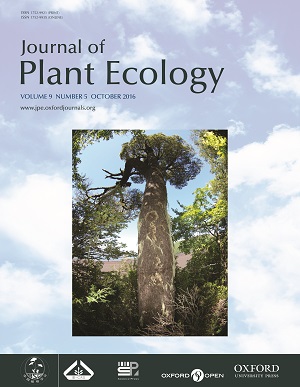Current Issue
-
 Volume 9 Issue 5
Volume 9 Issue 5
The picture was taken at the margin of our study site C (40,000 years of soil age; see Walter et al. 596–607). It shows an old Nothofagus dombeyi tree (at the margin of an N. dombeyi stand) with an estimated age of more than 200 years (samples from similar specimens have been taken on our study plots). Nothofagus dombeyi, the tallest of the South-American Nothofagus species, belongs to the predominant tree species of the temperate broad-leaved forests of Argentina and Chile. The stem of the tree is covered with mosses and lichens in a typical manner. Photo taken by Frank M. Thomas.
IF: 3.9
CiteScore: 5.7
CiteScore: 5.7
Editors-in-Chief
Yuanhe Yang
Bernhard Schmid
Yuanhe Yang
Bernhard Schmid
CN 10-1172/Q
ISSN 1752-9921(print)
ISSN 1752-993X(online)
ISSN 1752-9921(print)
ISSN 1752-993X(online)







